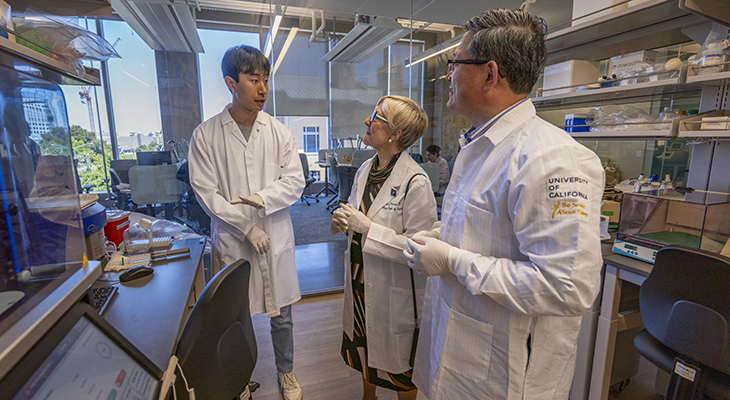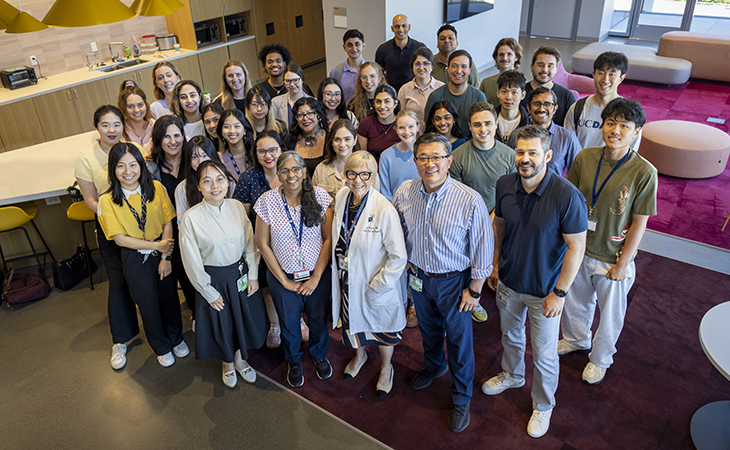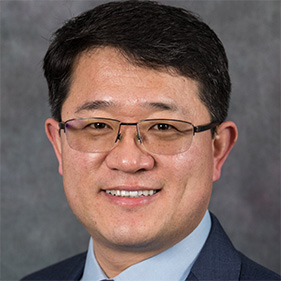Scientists from UC Davis Center for Surgical Bioengineering, the MIND Institute and UC Berkeley's Murthy Lab are developing an in-utero gene editing technology to fix mutations causing severe neurologic conditions.
Led by UC Davis Bioengineer Aijun Wang, the team will design and test a therapy targeting the UBE3A gene. Overexpression of this gene contributes to Dup15q syndrome, and its absence leads to Angelman syndrome. Both conditions are profound neurodevelopmental conditions that could co-occur with autism.
Finding a therapy for Dup15q syndrome
Dup15q syndrome affects about 1 in 5,000 individuals. It is 10 times more common in people with autism and intellectual disability. More than half of patients with Dup15q experience epilepsy.
"There is no readily available cure for Dup15q syndrome. Caring for chronically ill children with this condition places a significant emotional and financial burden on their families," said Wang, professor of surgery and biomedical engineering. "The goal of the gene editing therapy we are developing is to one day treat Dup15q in utero so that children are born without the condition."
Wang is the vice chair for translational research, innovation and entrepreneurship at the Department of Surgery. He co-directs the Center for Surgical Bioengineering and leads Wang Lab, a prime research hub in stem cell therapy and gene editing for early treatments of conditions such as spina bifida and Duchenne muscular dystrophy.
This new work will be funded by a 5-year $3.2 million grant from the National Institutes of Health's National Institute of Neurological Disorders and Stroke.

Early diagnosis allows for early intervention
UC Davis fetal surgeon Diana Farmer and Wang pioneered a groundbreaking spina bifida treatment by operating on developing babies in the womb.
Now, they are expanding to nanomedicine to help find treatment to babies with genetic diseases. These diseases can cause progressive loss of function, so early intervention is critical.
"We really have learned so much from our work on spina bifida about the fetal environment," Wang explained. "Intervening early in gestation can change the disease escalation and prevent the severe consequences of the genetic mutation."
Innovation in the delivery of the gene editing therapy
This new therapy targets neural stem and progenitor cells during a critical time in fetal development. It is an injection that uses a lipid nanoparticle (LNP) to carry Cas9 mRNA — the code to make the gene-editing enzyme. This enzyme is supposed to genetically modify the stem cells and correct the mutation. When these cells multiply and migrate to form neurons in the brain, they would carry the corrected genes.
Unlike delivery methods that use viruses to carry the gene editing therapy, this approach relies on LNPs. Wang's lab has developed the LNP technology in collaboration with UC Berkeley professor Niren Murthy. They screened many LNP formulations until they identified the ones that minimize toxicity and optimize efficiency when introduced to a developing fetus.
"A highly innovative aspect of this work is the nonviral delivery of the therapy," said Jill Silverman, professor in the Department of Psychiatry and Behavioral Science and the MIND Institute. "Using viruses as therapy carriers has been an issue in developing and optimizing gene therapies for trials. It sometimes can cause intense immune reactions that could prevent future use of this virus."
Gene editing is so powerful. A major barrier in the field of genetic diseases has been the absence of effective treatments for many of these conditions. But that is changing with the emerging gene editing and CRISPR technologies," Aijun Wang, UC Davis professor of bioengineering and surgery.-Aijun Wang, UC Davis professor of surgery and biomedical engineering
Disease mouse models and brains in a dish
The team has an ambitious three-pillar plan. They will:
- Identify an LNP formulation that can be safely and efficiently used in utero. They will test the toxicity and efficiency of their formulation in delivering gene editing proteins to the neural stem and progenitor cells.
- Observe the effect of this formulation in brain neurons of a Dup15q mouse model that overexpresses the Ube3a Silverman has identified relevant outcome measures and biomarkers of the disease that will be studied in the treated Dup15q mice.
- Test the formulation in a brain-in-a-dish model. This approach uses human stem cells that grow into brain organoids in a petri dish to mimic working human brain neurons. These organoids provide researchers the opportunity to assess the effects and compare them to those found in the mouse model.

Team science approach to tackle medicine's toughest genetic conditions
This study is co-led by Wang, Murthy and Silverman. It also brings together top-notch experts at UC Davis, including:
- Roy Ben-Shalom, assistant professor in the Department of Neurology, faculty at the MIND Institute and co-investigator on this study. He is an expert in brain organoid and brain function assays.
- Janine LaSalle, professor in the Department of Medical Microbiology and Immunology, faculty at the MIND Institute and co-investigator on this study. Her lab and the Silverman Lab generated and validated the mouse model that will be used in this study.
- Diana Farmer, fetal surgeon at the UC Davis Fetal Treatment Center and chair of the Department of Surgery.
- Jan Nolta, director of the Stem Cell Program and the UC Davis Gene Therapy Center in the Institute for Regenerative Cures.
- Herman Locsin Hedriana, medical director of prenatal diagnosis of Northern California and chief of the UC Davis Division of Maternal-Fetal Medicine. Hedriana is a leading expert in prenatal diagnosis and maternal-fetal medicine.
Wang and his team are planning to target different severe and early diagnosable genetic problems that can be fixed by gene editing. They are also exploring using this core technology platform to help patients with fetal conditions, such as Duchenne muscular dystrophy.
"Gene editing is so powerful. A major barrier in the field of genetic diseases has been the absence of effective treatments. But that is changing with the emerging gene editing and CRISPR technologies. Hopefully soon, many more diseases will be screened for during gestation, and cures will be available before birth," Wang said.







